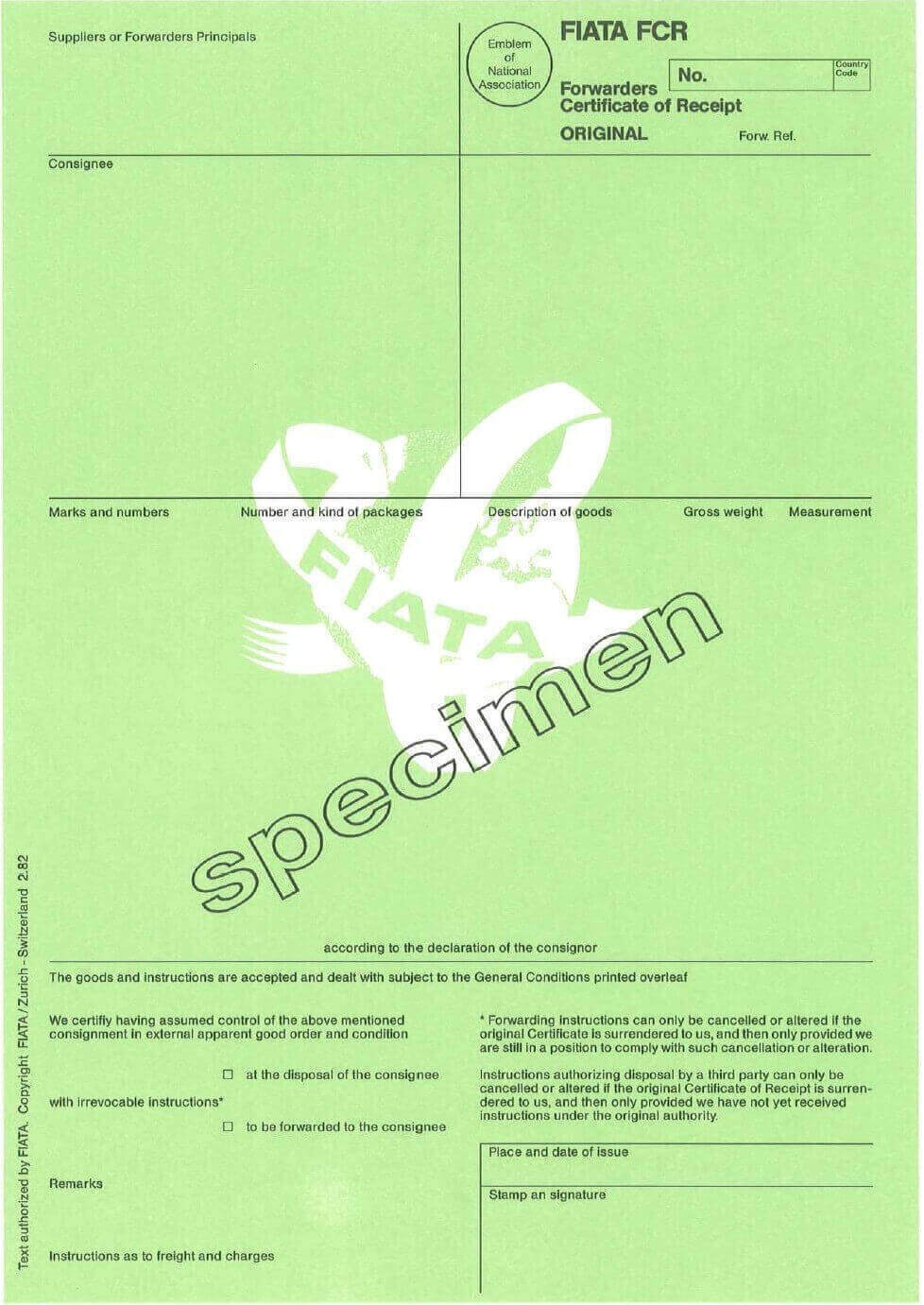On this post, I will explain Forwarder’s Certificate of Receipt, an international trade document, only issued by freight forwarders, whom are the members of FIATA (International Federation of Freight Forwarders Associations).
Freight forwarder is a person, who is expediting goods to the consignee on behalf of the shipper; may be an agent or company who performs services (such as receiving, trans-shipping or delivering) designed to assure and facilitate the passage of goods. (1)
FCR is an acronym, which stands for “Forwarder’s Certificate of Receipt”.
FCR is a standard form of a trade document, which was prepared by FIATA (International Federation of Freight Forwarders Associations) for general use in international shipments.
FCR is available to FIATA members only.
Why Exporters and Importers are Using a FCR Certificate?
FCR certificate mainly used in international transactions where Ex Works (EXW) trade term is selected by the parties.
According to ICC’s Incoterms 2010 rules “Ex Works” means that the seller delivers when it places the goods at the disposal of the buyer at the seller’s premises or at another named place (i.e., works, factory, warehouse, etc.).
The seller does not need to load the goods on any collecting vehicle, nor does it need to clear the goods for export, where such clearance is applicable.
Under Ex Works trade term, the Seller can prove to the Buyer that he has already places the goods at the disposal of the buyer’s forwarder with the presentation of a Forwarder’s Certificate of Receipt.
Also, if the payment will be made via a letter of credit, banks would like to see the FCR document.
What are the Main Characteristics of a FCR Certificate?
FCR document does not contain a contract of carriage. For this reason it is not accepted as a transport document under letter of credit rules.
- By issuing a FCR document a freight forwarder certifies to the consignor that,
- the freight forwarder has assumed control of the goods as indicated on the forwarder’s certificate of receipt in apparent good order and condition at the disposal of the consignee or
- the freight forwarder has assumed control of the goods as indicated on the forwarder’s certificate of receipt in apparent good order and condition with irrevocable instructions to be forwarded to the consignee.
- FCR document is not negotiable. It is non-negotiable so that consignee need not to present an original copy to collect the goods from the transport company.
What are the Differences Between a FCR (Forwarder’s Certificate of Receipt) and a B/L (Bill of Lading)?
Bill of Lading
- Bill of lading contains a contract of carriage between port of loading and port of discharge.
- Bill of lading can be issued in a negotiable form as shown on the below examples:
-made out to the order of the issuing bank.
-made out to order and blank endorsed. - At least one original bill of lading must be surrendered to the carrier for delivery of the goods in case bill of lading was issued in negotiable form
- Bill of lading is a transport document in regards to letter of credit rules.
- Bill of lading should show port of loading, port of discharge and shipped on board date on its face.
Forwarder’s Certificate of Receipt
- Forwarder’s Certificate of Receipt does not contain a contract of carriage.
- Forwarder’s Certificate of Receipt can’t be issued in negotiable form.
Consignee can clear the goods from the carrier without surrendering the original copy of - Forwarder’s Certificate of Receipt.
- Forwarder’s Certificate of Receipt is not a transport document in regards to letter of credit rules.
- Forwarder’s Certificate of Receipt need not to state port of loading, port of discharge and shipped on board date on its face.
- Forwarder’s Certificate of Receipt is not a transport document as defined in UCP 600 articles 19‐25. This document is to be examined only to the extent expressly stated in the credit, otherwise according to UCP 600 sub‐article 14 (f).
Sample Form of FCR (Forwarder’s Certificate of Receipt)
References:
- Transportation Best Practices Manual, PF Collins International Trade Services, 2003, Page:44
